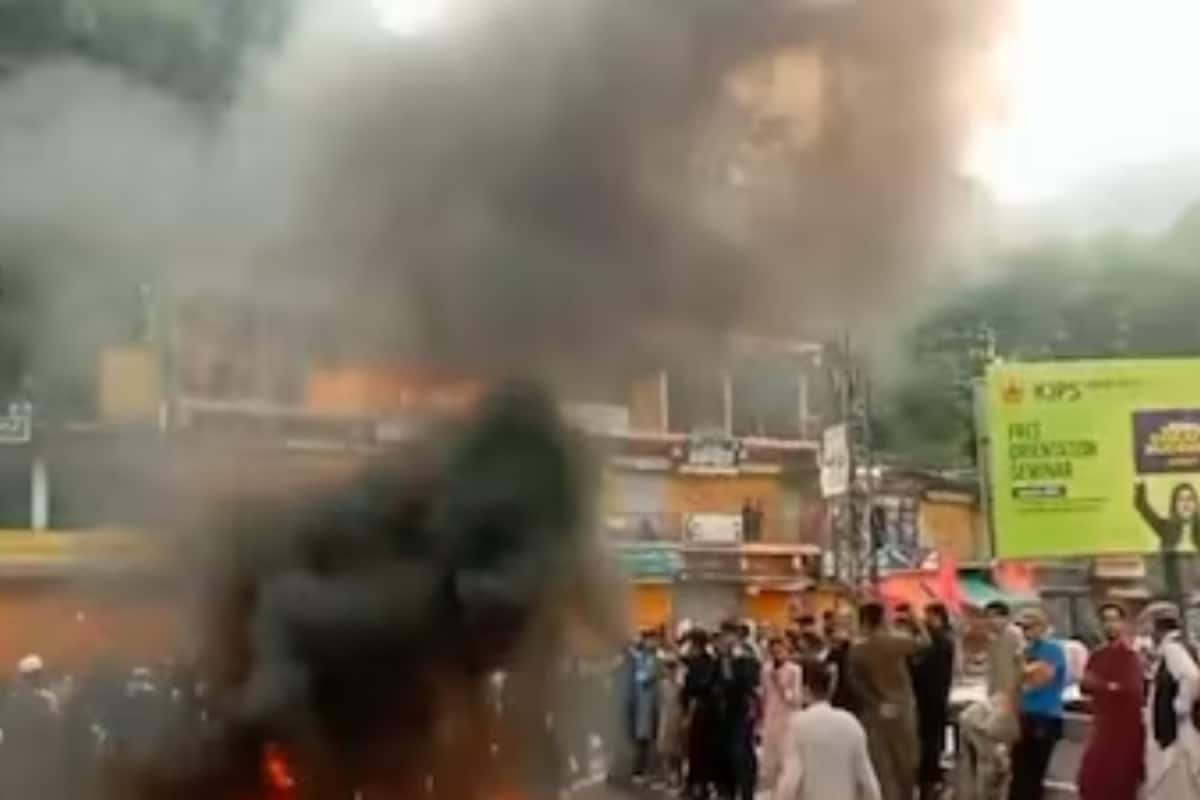World
Major Protests Planned in Pakistan-Occupied Kashmir Amid Tensions

A significant wave of protests is scheduled to unfold in Pakistan-Occupied Kashmir (PoK) on March 25, 2024, as thousands of civilians prepare to engage in a region-wide lockdown and wheel jam. Under the leadership of the Awami Action Committee (AAC), this grassroots movement is poised to be one of the largest mobilisations in decades, reflecting longstanding grievances against Islamabad’s policies.
The protests are primarily driven by immediate issues such as local governance and subsidies, alongside a broader sentiment of discontent that has simmered for years. According to local intelligence sources, the AAC’s call to action has garnered widespread support, uniting individuals across ethnic and class lines.
In response to the anticipated unrest, the government led by Prime Minister Shehbaz Sharif has deployed over 1,000 police personnel from Islamabad and additional paramilitary forces from Punjab province to maintain order. To further suppress potential dissent, authorities plan to shut down internet services across PoK starting at midnight, a move criticized by human rights groups as an attempt to hinder digital organisation.
The AAC has articulated its demands through a 38-point charter, which includes several key reforms. Among these is the call for the abolition of 12 assembly seats reserved for Kashmiri refugees settled in Pakistan, as the AAC argues this undermines local representation and grants Islamabad excessive control over PoK’s political landscape. Additionally, the charter seeks the renegotiation of hydropower agreements to ensure local communities benefit from the electricity generated at the Mangla and Neelum-Jhelum dams. The charter also demands immediate flour subsidies to address inflation and a revision of power tariffs linked to local generation rates, aiming to alleviate energy costs for residents.
Despite earlier promises from Islamabad regarding these issues, many demands have remained unmet, contributing to rising frustration among the populace. The AAC’s planned “shutter-down and wheel-jam” protest is intended to apply pressure on the government, with the possibility of continuing indefinitely if their demands are ignored.
The situation is particularly precarious given the historical context of PoK, which, despite generating substantial electricity through hydropower projects, suffers from frequent power outages and economic stagnation. Security sources in Islamabad are reportedly concerned that these protests might escalate into broader demands for independence, or Azadi, from Pakistan.
The AAC’s challenge to the existing political framework, particularly its push to eliminate reserved assembly seats for refugees, poses a direct challenge to Pakistan’s control over Muzaffarabad and could destabilize the region further. Observers note that if the protests are met with violent suppression, there could be a shift in the dynamics of unrest, potentially leading to youth radicalisation against the Pakistani state.
As the protests unfold, international attention may turn towards the PoK diaspora communities in the UK, US, and EU, who are expected to amplify protest narratives through alternative channels. The potential for escalating tensions, coupled with the threat of indefinite lockdowns and diaspora-led campaigns, could significantly impact the political landscape in the region.
The coming days will be crucial in determining whether the AAC’s movement results in meaningful change or further unrest in Pakistan-Occupied Kashmir.
-

 World5 months ago
World5 months agoSBI Announces QIP Floor Price at ₹811.05 Per Share
-

 Lifestyle5 months ago
Lifestyle5 months agoCept Unveils ₹3.1 Crore Urban Mobility Plan for Sustainable Growth
-

 Science4 months ago
Science4 months agoNew Blood Group Discovered in South Indian Woman at Rotary Centre
-

 World5 months ago
World5 months agoTorrential Rains Cause Flash Flooding in New York and New Jersey
-

 Top Stories5 months ago
Top Stories5 months agoKonkani Cultural Organisation to Host Pearl Jubilee in Abu Dhabi
-

 Sports4 months ago
Sports4 months agoBroad Advocates for Bowling Change Ahead of Final Test Against India
-

 Science5 months ago
Science5 months agoNothing Headphone 1 Review: A Bold Contender in Audio Design
-

 Top Stories5 months ago
Top Stories5 months agoAir India Crash Investigation Highlights Boeing Fuel Switch Concerns
-

 Business5 months ago
Business5 months agoIndian Stock Market Rebounds: Sensex and Nifty Rise After Four-Day Decline
-

 Sports4 months ago
Sports4 months agoCristian Totti Retires at 19: Pressure of Fame Takes Toll
-

 Politics5 months ago
Politics5 months agoAbandoned Doberman Finds New Home After Journey to Prague
-

 Top Stories5 months ago
Top Stories5 months agoPatna Bank Manager Abhishek Varun Found Dead in Well









